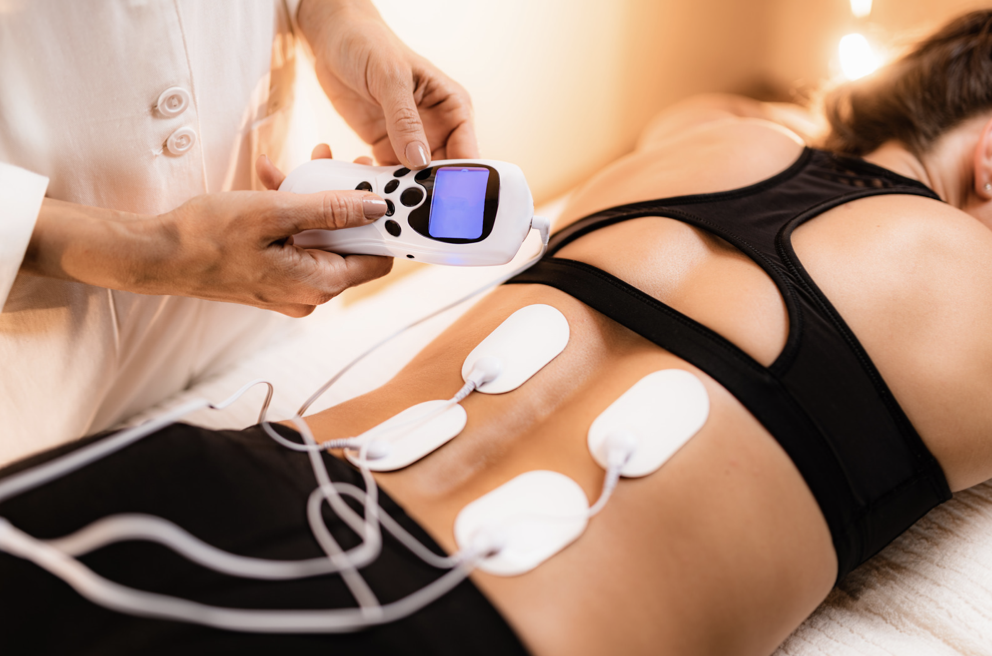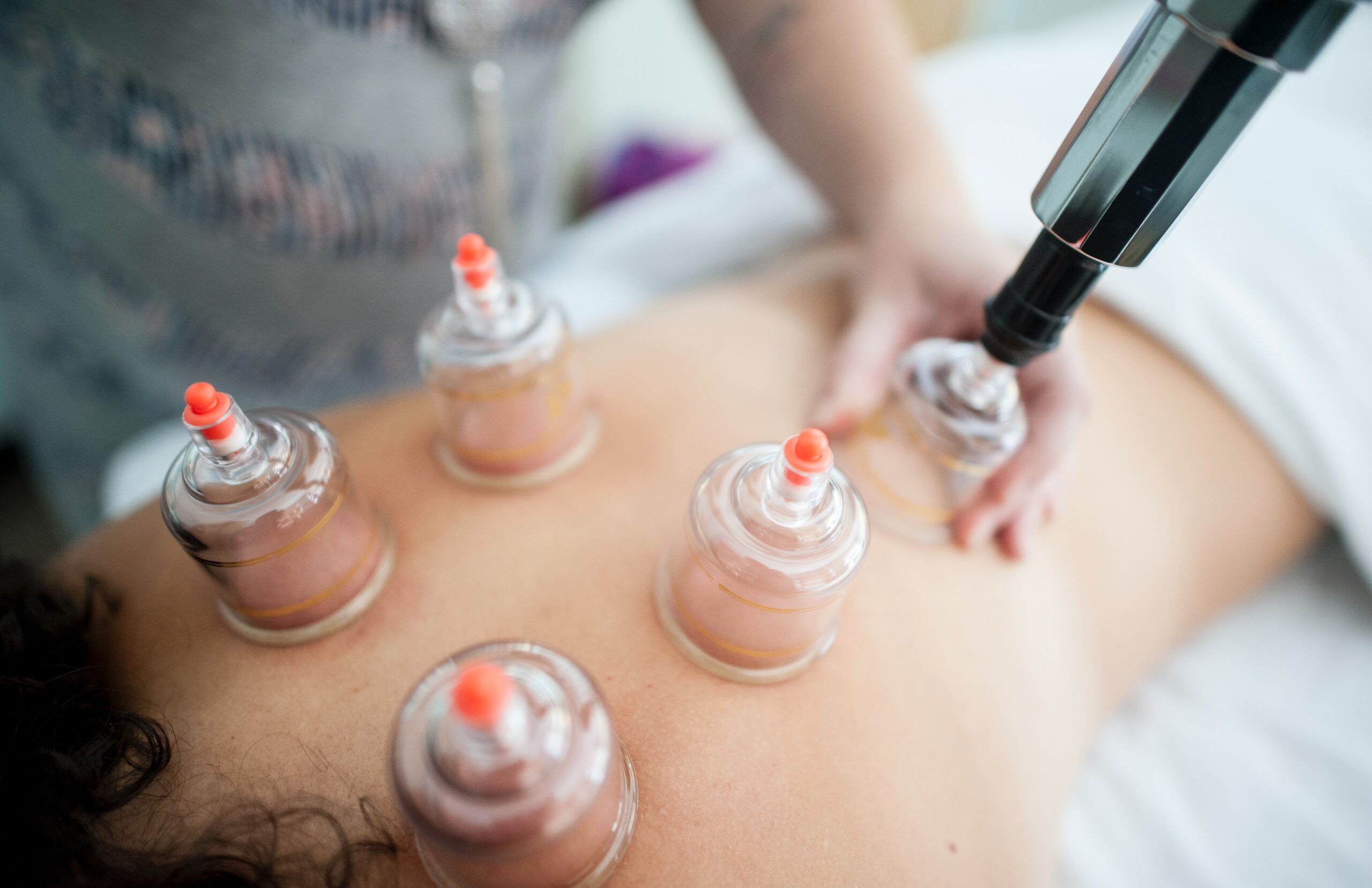
Chiropractic Adjustment
A procedure in which a controlled force is applied to specific joint segments in order to increase range of motion, decrease muscle spasm, reduce pain and nerve irritation while improving the body’s physical function.

Electric Muscle Stimulation
Transcutaneous electrical nerve stimulation (TENS) is a non-invasive treatment method for relieving pain by using electrical impulses via electrodes placed on the patient’s skin.

Dry Needling
Dry needling is a treatment used to restore proper function to abnormally behaving muscles. The affected muscles become “locked” and cannot function normally, which restricts movement and causes chronic pain. The needle itself acts to “unlock” the muscle by physically disrupting the tension and pressure within the involved tissue, thereby encouraging said tissue to return to a more normal and improved level of function.

Cupping Therapy
Cupping is an ancient treatment used in traditional Chinese and Middle Eastern medicine. It involves creating suction on the skin using a glass, ceramic, bamboo, or plastic cup in order to draw fluid into the region being treated. A local inflammatory response occurs, which may help decrease pain, increase circulation and promote cellular repair.

Instrument Assisted Soft Tissue Mobilization (IASTM)
A unique form of treatment in which a local inflammatory response is introduced to dysfunctional tissues using stainless steel instruments. This inflammation activates a healing response which helps reabsorb and remodel excessive fibrotic tissue, which may otherwise cause pain and limit mobility.

Active Release Techniques® (ART®)
A non-invasive treatment system precisely engineered to locate and quickly resolve soft-tissue disorders. This hands-on therapy helps treat any kind of soft-tissue, muscular or nerve issue, including strains and sprains, but also more complex disorders.

Kinesiotaping
Elastic therapeutic tape is applied to the skin in order to provide therapeutic effects, such as pain and swelling reduction, to improve range of motion, aid in lymphatic drainage and help stabilize and support joints.

The Webster Technique
The Webster technique aims to improve pelvic alignment and reduce sacroiliac joint dysfunction. It involves a specific assessment of the pelvis to identify any misalignment or abnormal motion of the tailbone (sacrum), which can cause pain or discomfort in the lower back, hips, and legs. There are also ligaments that attach directly from the uterus to the sacrum and abnormal positioning of the sacrum may cause excessive torsion on the uterus and thus the fetus. The technique can also be used for other conditions that affect the pelvis, such as sciatica, low back pain, and hip pain.
